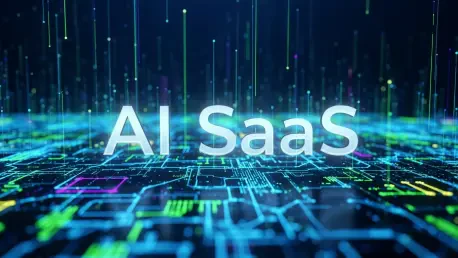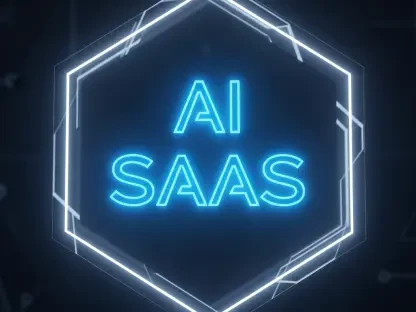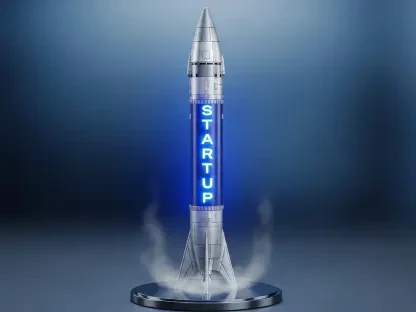I’m thrilled to sit down with Vijay Raina, a seasoned expert in enterprise SaaS technology and tools, whose insights into software design and architecture have shaped innovative solutions for businesses worldwide. With a deep understanding of scaling SaaS ventures and leveraging AI-native strategies, Vijay offers a unique perspective on rapid growth and customer-centric development. In this conversation, we’ll explore how to select the right market for explosive growth, the intricacies of customer discovery, the importance of team culture in scaling, and the evolving landscape of AI-driven SaaS solutions.
How did you identify customer service as a market ripe for disruption with AI-driven solutions?
Customer service stood out because it checked all the boxes for a high-impact SaaS play. The ROI was crystal clear—enterprises could see direct cost savings by automating support interactions, often saving three times what they invested. The market size is massive since every large company deals with customer support, creating endless opportunities for automation. Plus, there was real urgency; businesses weren’t waiting for the next budget cycle to adopt solutions that could cut costs immediately. We dug deep by talking to dozens of potential customers early on, focusing on their pain points and validating that AI could solve problems they were already losing money on.
What was your approach to engaging with potential customers during the initial discovery phase?
We went all in, packing our days with as many conversations as we could—sometimes talking to 100 people in a month. The goal wasn’t just to chat; it was to pinpoint who had real problems and a budget to solve them. We’d ask direct questions like, “If we built something to handle this issue, what would it be worth to you?” Then, we’d build rough prototypes overnight based on their feedback and show them the next day. It was exhausting but critical to avoid wasting time on ideas without traction. We stayed laser-focused on actionable insights, ignoring feedback that didn’t tie to a clear need or willingness to pay.
Can you describe how you balanced intense customer conversations with rapid product iteration in those early days?
It was a grind, no doubt. A typical day meant back-to-back calls or meetings, soaking up as much input as possible from potential users. We’d spend evenings synthesizing what we heard and building something tangible—often just a basic mockup or feature—to test the next day. The hardest part was staying disciplined; you can’t let fatigue derail the pace. We prioritized ruthlessly, focusing only on feedback that signaled real demand. That daily loop of listening, building, and validating kept us moving fast and ensured we weren’t just guessing at what the market wanted.
Why was focusing on willingness to pay more important than customer excitement during discovery?
Excitement can be misleading. I’ve had conversations where a potential customer loved the idea, raved about the concept, but when we got to pricing, they balked. That’s when you realize excitement doesn’t pay the bills. Willingness to pay shows true value. For example, early on, we spoke with a company that was thrilled about AI automation but admitted they couldn’t justify the cost over their existing setup. We pivoted to refine our pitch, focusing on hard numbers—cost savings and efficiency gains—until we found buyers who saw the math and committed. It’s about filtering out noise and finding real intent.
As a company scales, how do you maintain that deep connection with customers?
Scaling to a larger team—say, 100 people—doesn’t mean losing touch with customers; it just means you need systems to stay close. We set up weekly check-ins with key accounts, especially larger ones, to hear their evolving needs firsthand. More importantly, we don’t let customer feedback be just a sales team thing—everyone, from engineering to product, gets exposure to customer insights. We’re also proactive, reaching out before issues surface, asking pointed questions to uncover needs they haven’t even articulated yet. That keeps us ahead of the curve.
Why did you prioritize building a fully in-person team, and how has that influenced your company’s culture?
Going 100% in-person was a deliberate choice to foster a tight-knit, high-energy culture. When everyone’s in the same space, alignment happens naturally—you’re constantly bouncing ideas, solving problems in real-time, and feeding off each other’s drive. I believe we’d lose that organic collaboration in a remote or hybrid setup; things just slow down when you’re not face-to-face. Convincing hires to join us in-person hasn’t been hard because we screen for folks who thrive in that intensity. It’s a signal of commitment, and it’s shaped a team that’s all-in, moving at the same relentless pace.
How do you screen for raw intelligence and adaptability when hiring for a fast-growing SaaS company?
At an early stage, you don’t have playbooks or structure, so you need people who can figure things out on their own. We dig into past experiences with questions like, “Tell me about a time you tackled a complex project with no clear roadmap—what did you do, and how did you push through obstacles?” We’re looking for problem-solvers who adapt fast. Commitment is just as critical, so we gauge how much time and energy they’ve poured into past endeavors. A red flag is if someone seems hesitant about the pace or intensity—we can’t afford passengers; everyone needs to be driving.
How does building an AI-native SaaS solution differ from traditional SaaS models in terms of customer expectations and deployment?
AI-native SaaS flips the script on a few fronts. Customers now expect provable, fast ROI—you can’t just promise value; you have to show it with hard metrics like cost savings or improved satisfaction scores within weeks. Deployment is also more flexible; you can start small, automating just one piece of the puzzle for a fraction of their user base, then scale up once it works. That shortens buying cycles because enterprises aren’t waiting for massive, perfect rollouts. But the tech layer keeps evolving—models improve monthly—so we build with flexibility in mind, focusing on the business problem, not the tech itself, ensuring we can swap in better tools as they emerge.
What’s your forecast for the future of AI-native SaaS, especially in terms of market evolution and competition?
I see AI-native SaaS continuing to explode, but the winners won’t be the ones with the flashiest tech or the most hype—they’ll be the ones who nail execution and customer value. Markets like customer service will keep growing as more enterprises see the undeniable ROI, but competition will get fierce. Companies will need to differentiate not just on AI models, which are becoming commoditized, but on deep customer understanding and seamless integration into existing workflows. I expect we’ll see a wave of consolidation too, as smaller players struggle to keep up with the pace of innovation and larger ones acquire to expand their reach. The key will be staying hungry and focused on solving real problems, no matter how crowded the space gets.









